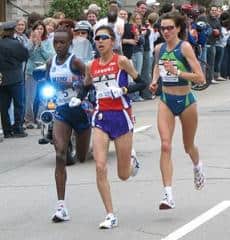 I get plenty of questions in various comments throughout the website, but I also get comments and questions via the Project Swole Contact Form.
I get plenty of questions in various comments throughout the website, but I also get comments and questions via the Project Swole Contact Form.
Generally I address those questions through e-mail, but often I do not have the time to reply to each and every question personally.
The category Your Health Questions attempts to take a more proactive approach to answering your questions so that everyone can benefit from the Q & A.
Scott wrote:
“First off very good site, very informative.
I am 33 5-11 170lbs. I just went from a split where I was doing 30 min low intensity cardio after the work out. I have been enjoying the full body workouts; I feel I get more out of it.
I am trying to maintain the muscle I have and get more ripped toned. Should I keep doing a low intensity cardio session after my work out or should I move to HIIT or some sort of other interval training on the off days?
I always read cardio after lifting or in the am is the best. So will I still burn fat doing cardio on the off days? Help!!”
Response:
First off, thank you for the kind words. I’m glad I can help someone with my babbling.
Second, I agree with you about full body workout routines. I find full body training to be far more effective at stimulating all kinds of gains than a traditional split routine.
Now, regarding your cardio questions, I have a couple responses and then I will discuss my reasoning:
- My opinion is that you should focus more on high intensity interval training (HIIT) than on aerobic cardio.
- If you insist on doing aerobic cardio at the same time as weight training, then it should be performed after weight training, but then you have to accept the drawbacks of doing cardio after weight training.
- If you insist on doing aerobic cardio, not at the same time as weight training, but on the same day as weight training, it should be performed in the morning, on an empty stomach.
- If you insist on doing aerobic cardio on a non-weight training day, then you have 2 choices:
- in the morning on an empty stomach – to maximize fat loss
- any other time of the day – used as active recovery
- If you plan doing HIIT, it should not be performed before a workout.
- Cardio in general works best when performed 8-10 hours before or after weight training, or on a separate day.

What Exactly is HIIT?
High Intensity Interval Training (HIIT) is cardiovascular exercise that predominantly uses the anerobic energy system. HIIT includes repeated short bursts of maximum intensity exercise followed by short duration minimal intensity exercise.
Here are some HIIT ideas for example:
- Interval sprints – sprint for 60 seconds, walk for 60 seconds, repeat.
- Stair sprints – sprint up a set of stairs, walk back down, repeat.
- Bicycle sprints – pedal as hard as you can for 60 seconds, pedal slow for 60 seconds, repeat.
- Upper body tabatas – 20 seconds of max intensity upper body exercise (push ups, pull ups, etc…) followed by 10 seconds of rest, repeat 8 times.
- Swim sprints – swim as hard as you can for 60 seconds, tread water for 60 seconds, repeat.
- Row sprints – row as hard as you can for 60 seconds, row lightly for 60 seconds, repeat.
Get the idea?
You can pick exercises to target specific body parts in case of soreness or other factors, or you can choose full body HIIT if you want to maximize your training. What I mean is that upper body high-intensity intervals like tabatas obviously target upper body, running and biking target lower body, swimming and rowing target the whole body.
Why Choose HIIT Over Aerobic Cardio
Simply put, HIIT helps maintain and sometimes build muscle, while aerobic cardio breaks down muscle. It is becoming increasingly accepted that steady state cardio is inferior to high intensity cardio for nearly every aspect of fitness.
HIIT promotes strength increases because you are using fast twitch muscle fibers at maximum intensity for a short duration. By stimulating the neurological pathways with HIIT you are promoting speed, strength, and power gains.
With aerobic cardio you are only training for muscular endurance, which is fine if you are a marathon runner or a triathlete.
HIIT also burns more calories than aerobic cardio in the same amount of time. This is a known fact.
Aerobic vs. Anaerobic Cardio: Who would you rather look like? |
|
| Sprinters | Marathon Runners |
 |
 |
 |
 |
Why Cardio Before Weight Training is Less Effective
Here are the reasons why you should not perform long-duration cardio immediately before weight training:
- You will use up your glycogen stores before lifting, which means your body will draw energy from amino acids in the body. In other words it will start breaking down muscle tissue for energy.
- You will be tired and unable to devote maximum intensity to lifting.
- Mentally, you will be less willing to lift and focus on weight training, because you have already worked out.
- Lactic acid will build up in your system and because you are switching from the aerobic energy system to the anaerobic energy system, there will be no way to flush the lactic acid and your muscles will not function at their optimum.
I do however, advocate warming up for 5-10 minutes at a low intensity before lifting.
Why Cardio After Weight Training is Less Effective
Here are the reasons why you should not perform cardio for a long duration immediately after the workout:
- You will miss your opportunity to drink your high GI post workout shake within 20 minutes after weight training, when you need it most.
- If you do drink your high GI post workout shake, the cardio will burn up that glycogen that your muscles so desperately need, thus eliminating the entire goal of the post workout drink.
- After a training session your body is catabolic. Tissue, including muscle fiber, is breaking down. You want to reverse that process and jump start protein synthesis ASAP. By continuing to exercise you are just prolonging the catabolic state.
The only thing I would recommend is to finish your workout off with 10-15 minutes of low intensity aerobic cardio in order to cool down and flush the lactic acid out of your system. This is the one thing, besides breaking down muscle tissue, that aerobic cardio is good at.
Why Not to Use HIIT Training Before Weight Training
HIIT training uses the same energy system as weight training (anaerobic). Since you would have already exhausted your glycogen and ATP stores from HIIT, doing HIIT before a weight training session will not allow you to use maximum intensity for lifting.
Instead:
- use HIIT after heavy lifting to increase metabolic capacity of your fast twitch fibers, and improve conditioning
- use HIIT training for your AM workouts if you do weight training at night
- use HIIT for your PM workouts if you do weight training in the morning
- use HIIT on off-day workouts when you aren’t weight training at all
This will allow you to have completely replenished energy sources for both your HIIT sessions and weight training, or in the case of option 1 you’ll being using HIIT to supplement your weight training for conditioning reasons.
When to Choose Aerobic Cardio Over HIIT
Obviously you don’t want to use 3 days of intense weight training alternating with 3 days of max intensity HIIT training. This tends to impact recovery because you are using your anaerobic energy system every day, causing intense trauma to the muscles, which never have a chance to fully, or even partially, recover.
Instead I recommend using aerobic cardio once or twice a week to break up high intensity training (weight lifting and/or HIIT) workout sessions. The benefits of active recovery have been seen numerous times in many studies across many forms of exercise. Arguably one of the best, most effective forms of aerobic cardio is rowing, particularly using a quality indoor rower that reports all aspects of your rowing workout such as beats per minute, calories burned, distance, etc…
I also mentioned that there is some benefit to doing 10-15 minutes of low intensity aerobic cardio after weight training, to cool down and flush lactic acid. Just don’t let it eat into your 20 minute window for post-workout nutrition.
Sample Workout Routines
For the aerobic cardio fanatic who has convinced themselves that they need to do endurance cardio to lose weight, here are some routines that include the maximum amount of aerobic exercise that I would ever recommend for the specific training cycle.
A 3 day per week routine might look like this:
Monday: 20 minutes of HIIT in the morning after a small snack, followed by breakfast; 45 minutes of full body weight training at night, followed by 10 minutes of aerobic cardio immediately after the workout, followed by a post-workout drink filled with high GI carbs and BCAAs.
Tuesday: Off or 20-40 minutes of aerobic active recovery.
Wednesday: 45 minutes of aerobic cardio in the morning on an empty stomach, followed by breakfast; 45 minutes of full body weight training at night, followed by a post-workout drink filled with high GI carbs and BCAAs.
Thursday: Off or 20-40 minutes of aerobic active recovery.
Friday: 20 minutes of HIIT in the morning after a small snack, followed by breakfast; 45 minutes of full body weight training at night, followed by 10 minutes of aerobic cardio immediately after the workout, followed by a post-workout drink filled with high GI carbs and BCAAs.
Saturday and Sunday: Off
A 4 day per week routine might look like this:
Monday: 20 minutes of HIIT in the morning after a small snack, followed by breakfast; 40 minutes of upper body weight training at night, followed by 10 minutes of aerobic cardio immediately after the workout, followed by a post-workout drink filled with high GI carbs and BCAAs.
Tuesday: 40 minutes of aerobic cardio in the morning on an empty stomach, followed by breakfast; 40 minutes of lower body weight training at night, followed by a post-workout drink filled with high GI carbs and BCAAs.
Wednesday: Off or 20-40 minutes of aerobic active recovery.
Thursday: 20 minutes of HIIT in the morning after a small snack, followed by breakfast; 40 minutes of upper body weight training at night, followed by 10 minutes of aerobic cardio immediately after the workout, followed by a post-workout drink filled with high GI carbs and BCAAs.
Friday: 40 minutes of lower body weight training at night, followed by 10 minutes of aerobic cardio immediately after the workout, followed by a post-workout drink filled with high GI carbs and BCAAs.
Saturday and Sunday: One day Off or 20-40 minutes of aerobic active recovery, the other day Off completely.
A 5 day per week routine might look like this:
Monday: 45 minutes of full body weight training, followed by 10 minutes of aerobic cardio immediately after the workout, followed by a post-workout drink filled with high GI carbs and BCAAs.
Tuesday: 25 minutes of HIIT anytime during the day, followed by a post-workout drink or a low fat, medium carb, high protein meal.
Wednesday: 45 minutes of full body weight training, followed by 10 minutes of aerobic cardio immediately after the workout, followed by a post-workout drink filled with high GI carbs and BCAAs.
Thursday: 25 minutes of HIIT anytime during the day, followed by a post-workout drink or a low fat, medium carb, high protein meal.
Friday: 45 minutes of full body weight training, followed by 10 minutes of aerobic cardio immediately after the workout, followed by a post-workout drink filled with high GI carbs and BCAAs.
Saturday and Sunday: One day Off or 20-40 minutes of aerobic active recovery, the other day Off completely.
A 6 day per week routine might look like this:
Monday: 45 minutes of full body weight training, followed by 10 minutes of aerobic cardio immediately after the workout, followed by a post-workout drink filled with high GI carbs and BCAAs.
Tuesday: 25 minutes of HIIT anytime during the day, followed by a post-workout drink or a low fat, medium carb, high protein meal.
Wednesday: 45 minutes of full body weight training, followed by 10 minutes of aerobic cardio immediately after the workout, followed by a post-workout drink filled with high GI carbs and BCAAs.
Thursday: 45 minutes of aerobic cardio in the morning on an empty stomach, followed by breakfast.
Friday: 45 minutes of full body weight training, followed by a post-workout drink filled with high GI carbs and BCAAs.
Saturday: 25 minutes of HIIT anytime during the day, followed by a post-workout drink or a low fat, medium carb, high protein meal.
Sunday: Off
So, that’s it.
Keep the following tips in mind:
- HIIT = speed, strength, power gains. Endurance gains. Burns more calories than endurance cardio.
- Aerobic = endurance gains. Good for flushing lactic acid. Active recovery.
- Growth comes from rest and recovery, not from working out twice a day, six days a week.
- Nutrition is extremely important, especially when exercising frequently.
Tags: aerobic, anaerobic, cardio, cardiovascular, hiit, interval training, intervals











This is a great article. I especially like the pictures showing the differences between sprinters and long distance runners(I may have to move to Austrailia someday!). This undeniably reveals how your traning methods will define you. The sample routines you listed are great starts. But maxium efficiency is reached when you’re able to bang out 20 rep squats, dumbell rows, and snatches for reps, for example. These type of exercises intergrate resistance training and HIIT to offer the most bang for the buck. It’s no seceret that in order to achieve the body you want, you have to push beyond your comfort zone. I believe people will continue to stay in denial and do the same leisurely, lazy habitual activities that won’t deliver the results they’re after. Thank you Steve for inspiring and directing us to reach our goals with the truth.
Steve,
What a great post!
I’m a certified personal trainer too (BA in exercise sciences), and I rarely come across an article on cardio that sums up the debate like yours did.
(Lyle McDonald wrote few good ones.)
I also liked how you offered your recommendations right off the bat.
Just a minor point: you can’t compare sprinters and marathoners and conclude sprinters are more muscular because they sprint. Genetics come into play: it is likely those sprinters were born more muscular that those marathoners.
True, training affects muscle size, but genetics also count.
Great article overall Steve.
Best,
Carl Juneau
Thanks Carl. Genetics play a big role in everything to do with training. Often people end up becoming sprinters or marathoners because of their genetics rather than despite their genetics. What I mean is that someone who is born with small, skinny muscles will probably drift towards marathons or triathlons, because that is what their body is best at. Thanks for your comments.
Once again, thank you so much for all of this great posts, Steve.
If my schedule if flexible and open, what is the max. number of day to work out a week, while still giving my self sufficient time to recover? Also, What are the signs of over training?
Your options for constructing a workout routine are unlimited. I believe it is important to take at least 1 full day off each week, but it is really a personal preference – it depends on what works best for you after lengthy trial and error. If you do train 6 days a week, they can’t all be max intensity, keep that in mind. You should really sprinkle in active recovery as necessary to let your body recoup for the max intensity sessions. Or maybe you almost never go “all-out” and can sustain 6 days a week of medium intensity with 1 or 2 max intensity sessions. Again, it’s all in what works for you and your schedule.
Wow, just found this after posting on the other post detailing how to do HIIT. This is a great info source.
Just one question though, why full body workouts on seperate days instead of body part splits?
I like full body workout routines, but I like an upper/lower or a push/pull split too.
I LOVE DOING THE TOTAL BODY WORKS 3 TIMES A
WEEK, I WOULD LIKE TO KNOW HOW MANY SET’S AND REPS AND HOW MANY TOTAL SETS PER BODY PART. I’AM 41 YEARS OLD AND HAVE BEEN TRAINING SENCE I WAS 15 YEARS OLD. MY GOAL IS TO GET LEAN WITH OUT LOSSING MUSCLE.
I HAVE GOOD GENETICS I’AM 6’1 210-220
ABOUT 15%-20% BODY FAT.
James, try this: a full body workout routine.
This article is a blessing to me. I never felt before that I was equipped with the right knowledge to attack the fat in my life and build lean muscle mass. Now I feel equipped to do that. There is so much information out there on the market, and with people always endorsing this or that it makes me wonder what’s real and what’s just for show to make a sale. I know we all got to eat so I ain’t mad at the companies. That’s why I appreciate this website. I feel like I came across a precious gem buried or tucked away! Great Job Keep it up!
Thanks for the great feedback Nina!
I absoulutely concur with this advice.
I started out doing a lot of low intensity cardio along with my weight training, and I lost a significant amount of weight.
Unfortunatley, the weight I lost was not only body fat, but also muscle.
Now I have switched to HIIT and lifting heavy, to regain the muscle mass that I lost.